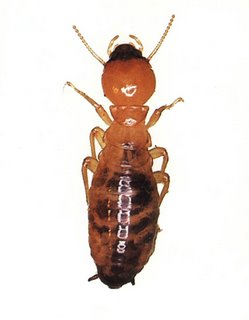 You may have heard about this, and it is worth repeating. Architect Mike Pearce was given a complex challenge on a project in Zimbabwe. He was asked to build an office building that would be comfortable without air conditioning! The result: Eastgate, a mixed office comoplex and shopping mall covering half a city block in the business center of Harare, Zimbabwe. How did he do it? By studying termite mounds, which are able to maintain a constant temperature dispite ambient temperature swings ranging from 35 to 104 degrees. You can find out more about how it works at Wikipedia entry. Fascinating!
You may have heard about this, and it is worth repeating. Architect Mike Pearce was given a complex challenge on a project in Zimbabwe. He was asked to build an office building that would be comfortable without air conditioning! The result: Eastgate, a mixed office comoplex and shopping mall covering half a city block in the business center of Harare, Zimbabwe. How did he do it? By studying termite mounds, which are able to maintain a constant temperature dispite ambient temperature swings ranging from 35 to 104 degrees. You can find out more about how it works at Wikipedia entry. Fascinating!It is estimated that half the energy that we use in our homes is related to heating and cooling. So, what can we learn from the indiginous animals (insects being perhaps the most inventive of the bunch) that might help the frigid northeast stay warm, soggy northwest stay dry, the dry southwest stay cool, and all of the structures in our country work with nature instead of just against it? This could have huge economic and social consequences. How many social welfare dollars goes to paying utilities that could be used for other things? How many industries would be disrupted by this change of approach?
A lot has been said about looking to the animal kingdom for insight on how organizations function, how work is accomplished in teams, and for innovation insights for medicine, architecture, and energy production. A new term has been penned: biomimicry. I think this field is fascinating and makes practical sense. What other examples of biomimicry have you seen or heard about that have inspired you or your work?



